Our annual photography competition in partnership with Magnum Photos
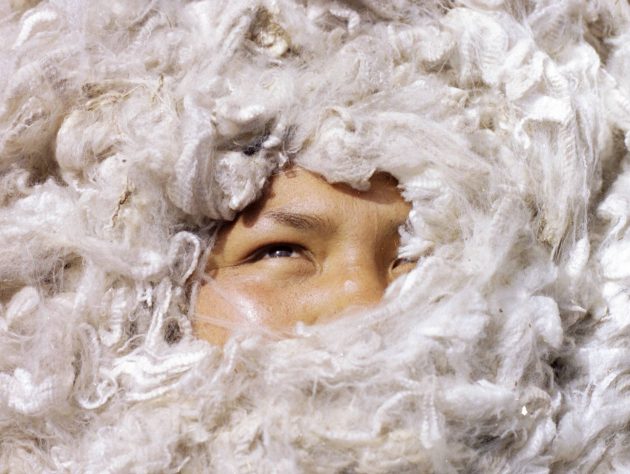
Four years of documenting the stories behind the seams
For four years, Textile Exchange has been running a photography competition in partnership with Magnum Photos. The annual competition invites emerging visual storytellers to explore the narratives that unfold when fibers and materials are cultivated, created, spun, woven, sewn, loved, and cherished – gaining cultural and emotional significance through the journey.
THEME
Exploring the connections behind clothes
Our 2025 competition called on photographers to explore the way we transform textiles, and how textiles in turn transform us.
Clothing and textiles connect us intrinsically to our planet and its many ecosystems, cultures, and communities. The materials used to make them come from farms, forests, or even oil from the earth – passing through many pairs of hands, transformed each time before they become the final product that we buy.
IMAGE: PIERRE GIRARDIN
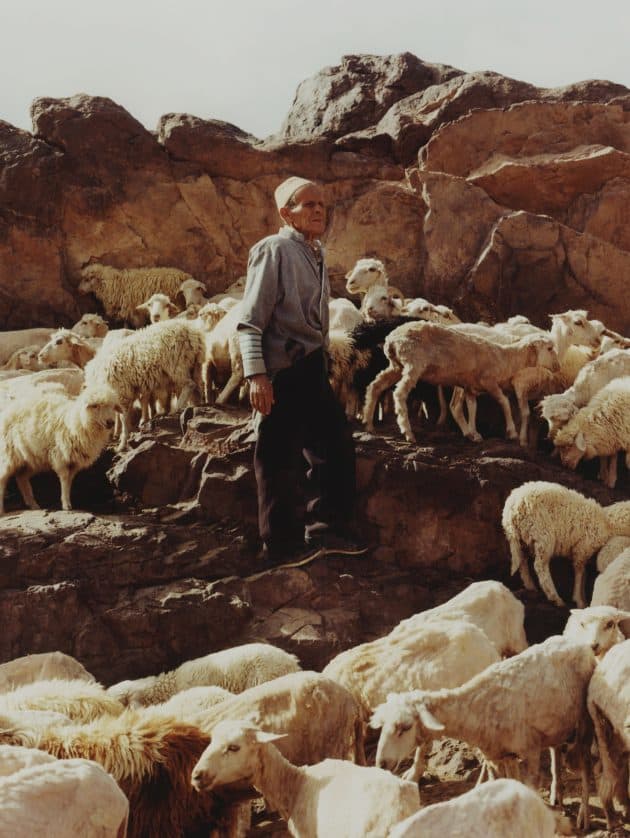
BACKGROUND
Placing textiles at the center of the story
In partnership with Magnum Photos, our annual photography competition invites photographers to document the people, places, culture, and nature behind the finished products.
The initiative hopes to reframe the way we relate to their social, cultural, and environmental implications. It is about altering our attitude towards these everyday items, all while providing a springboard for emerging talent to embrace a more human approach to visual storytelling.
IMAGE: KIN COEDEL
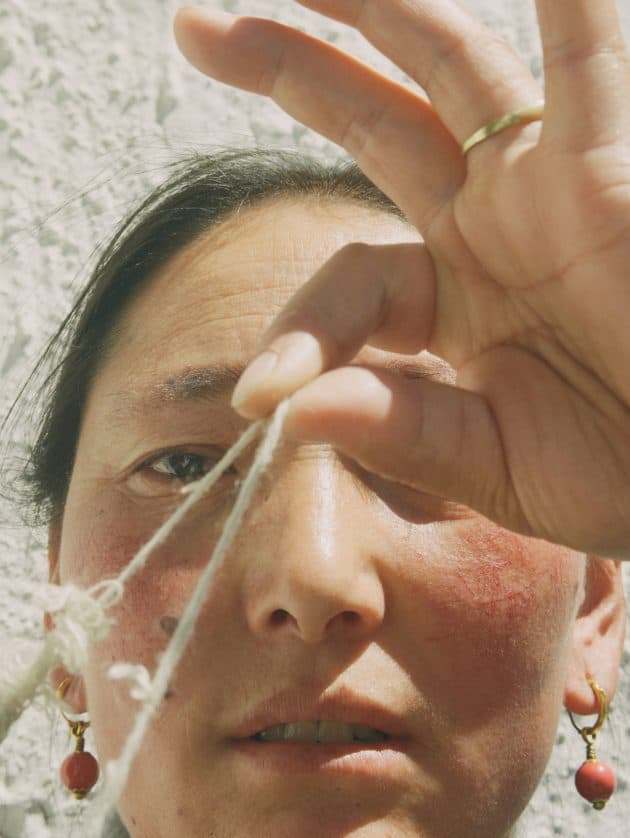
How it works
What the winners recieve and how they're selected
The jurors
Competition winners are selected by a panel, consisting of experts from a range of disciplines. The 2025 jurors included Claire Bergkamp (CEO, Textile Exchange), Sonia Jeunet (Education Director, Magnum Photos), Lorenzo Meloni (Magnum Photographer), Sabiha Çimen (Magnum Photographer), Olya Kuryshchuk (Founder and Editor-in-Chief of 1 Granary), Aditi Mayer (Activist and Storyteller), and Jenny Walton (Artist and Writer, Jenny Sais Quoi).
The prizes
The prizes are intended to enrich the winners’ creative development and career progression. This year, the overall winner received a commission for Textile Exchange to the value of $10,000 to document a story about materials and their origins, as well as a mentorship with a leading talent from Magnum’s network of photographers and support from the Magnum Photos Education team. One runner-up also received a commission to the value of $7,000 for Textile Exchange.
Magazine and exhibition
Each year, the winning entries are published in our annual printed magazine, Unwoven, as well as showcased in an original exhibition at the Textile Exchange Conference. Held annually, the event brings over 1,300 brands, retailers, and suppliers together to ensure that fashion, textiles, and apparel are produced in a way that supports our planet, its ecosystems, its landscapes, and its communities.
2025 WINNER
Pierre Girardin
Based in Marseille, France, Pierre Girardin is particularly drawn to the craftsmanship, ancestral knowledge, and evolving traditions that represent the deep relationship between communities and their environments. His winning entry follows the wool ecosystem in Morocco, from its nomadic producers to the talented craftspeople transforming the fiber. He starts with shepherds and livestock breeders in the Siroua region, documenting how climate change has led to water shortages and a lack of grazing land. His lens captures both the challenges of survival and the resilience of local cooperatives working to revive wool in traditional crafts.
This takes him to a small village in Morocco’s Anti-Atlas region, inhabited mostly by women. It is known for weaving woolen veils and painting them using henna as a natural dye. While these women have historically been rendered invisible by craft merchants, Girardin shines a light on the weavers and the mastery they have over their craft.
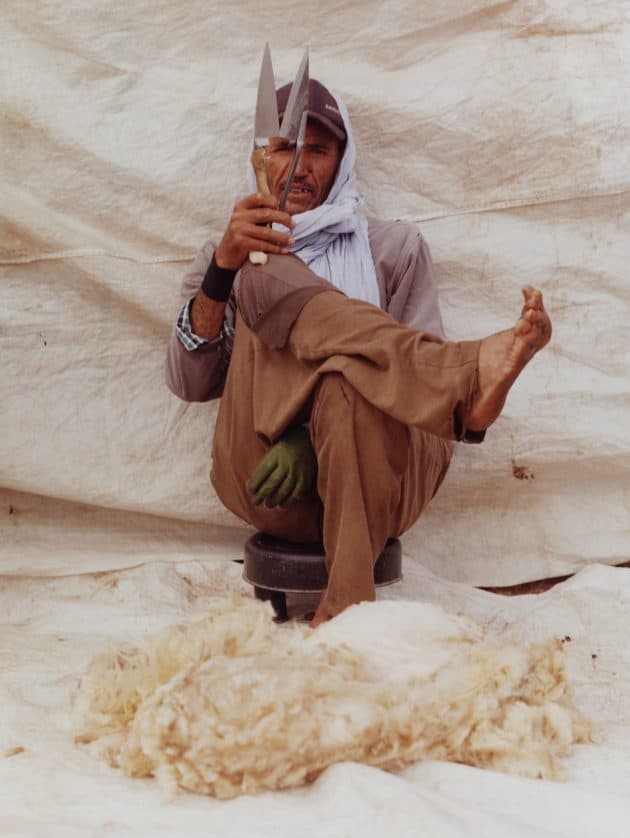
2025 Runner Up
Cecília Bueno
Hailing from Brazil, Bueno is a photographer and filmmaker whose work connects gesture, land, and time into visual narratives. Her winning photo series documents communities of agroecological farmers in the Borborema Plateau in the semi-arid highlands of Paraíba, Brazil. The project follows the full cycle of organic cotton, from the sowing of ancestral seeds to the harvest, when the fields fill with what they call “white gold.”
Agroecological farmers aim to restore balance to ecosystems while honoring traditional knowledge, through ancestral practices such as spinning, weaving and harvesting. By centering the narrative on those who grow cotton and their deep ties to the land, Bueno set out to shift the gaze from the final product in the fashion chain to the human, ecological, and emotional paths that precede it.

2024 winner
Alejandra Orosco
Last year, the third edition of our annual competition saw 356 photographers from 64 countries submit over 6,000 photographs exploring how textiles transform people, places, cultures, and nature.
Overall winner Alejandra Orosco shares the story of the women seeking to bring back natural indigo to the town of Chinchero, Peru.
Based in Cusco, Peru, Orosco’s work explores identity, colonization, and untold stories, encouraging viewers to appreciate distant realities while finding common ground with their own. Her winning project, Sueño en Azul (A Dream in Blue), documents the possible impact of climate change and colonization on Andean textile culture, focusing on the indigo blue plant.
Used in the traditional textiles of the pre-Inca town of Chinchero, indigo has since disappeared from the country. Orosco’s work follows the journey of a group of Indigenous women working to revive its cultivation amid economic and environmental pressures, seeking to reconnect with their heritage by growing the plant on their land once again.
IMAGE: ALEJANDRA OROSCO
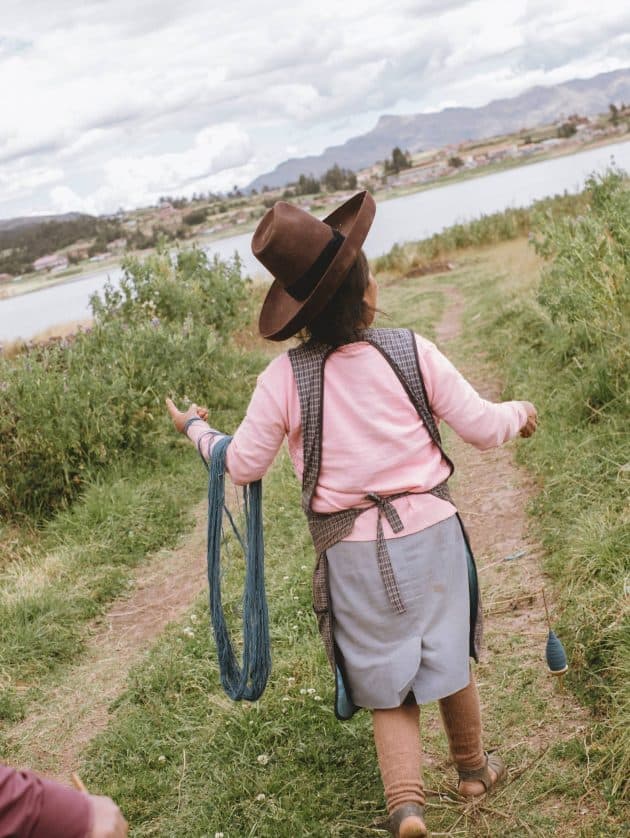
2024 runner up
Priyadarshini Ravichandran
2024 competition runner-up Priyadarshini Ravichandran’s entry highlighted the disappearance of Indigenous desi cotton varieties in the village of Wardha, India.
Born in Tamil Nadu, India, Ravichandran is a documentary photographer and artist whose work focuses on women, their lives, and the land. Her project “Wardha” documents the Indian village of the same name that holds historical significance as Mahatma Gandhi’s adopted home. Here, Gandhi envisioned a decentralized future, promoting hand-spun Indigenous desi cotton to uplift farmers and households.
However, today Wardha reflects the harsh realities of industrialization and corporate farming, with chemical-intensive cotton monoculture leading to health issues and escalating farmer debt. Through her lens, Ravichandran uncovers the remnants of Gandhi’s vision, exploring the enduring connection between the people and their land.
IMAGE: Priyadarshini Ravichandran
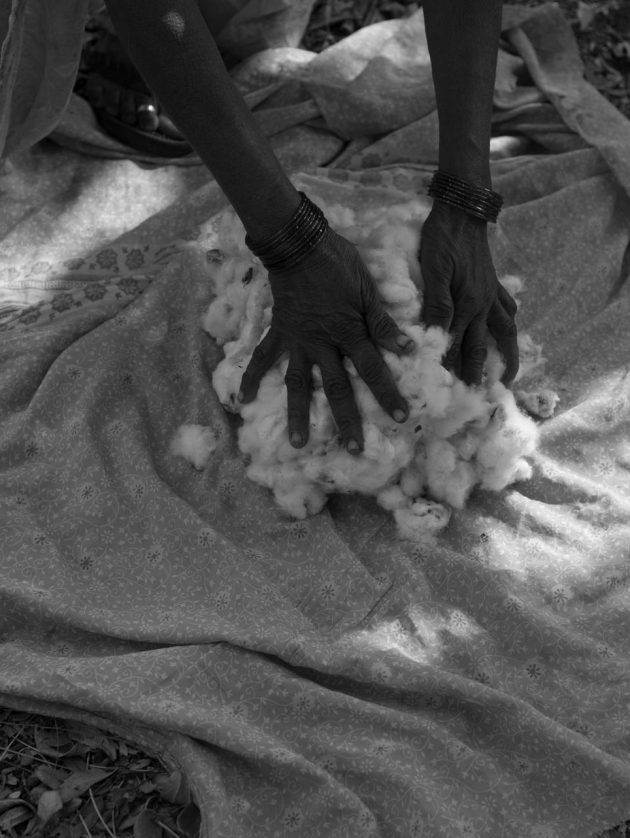
See some of the commissions from competition winners so far
Each year, the competition winner and runner up is commissioned to document a story about material production for Textile Exchange. We seek out projects with sustainability at their core, showing the beauty that arises when people and ecosystems are put first. The resulting commissions are all about deepening our collective understanding and imagining a future where this way of making materials becomes the norm.
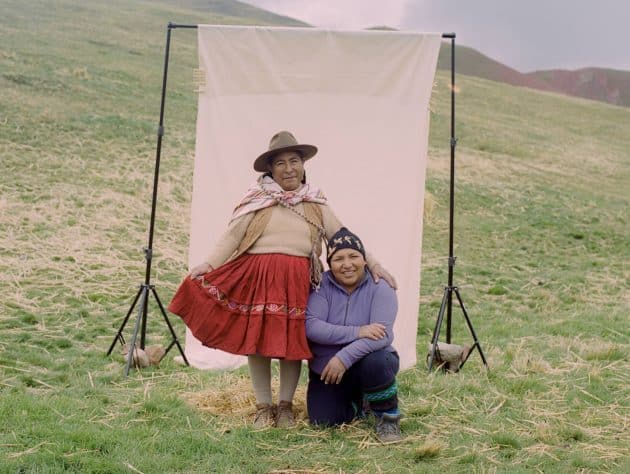
Alejandra Orosco
After winning the 2024 competition, Alejandra Orosco’s commission saw her travel high into the Peruvian highlands to meet Evelyn Diaz, a Responsible Alpaca Standard-certified farmer and advocate. Evelyn carries forward her family’s 40-year legacy at Fundo El Nevado in Puno. She was the first woman in her village to pursue a professional career in veterinary medicine and now works to improve animal welfare, implement innovative ideas for herd management, and empower female alpaca farmers.
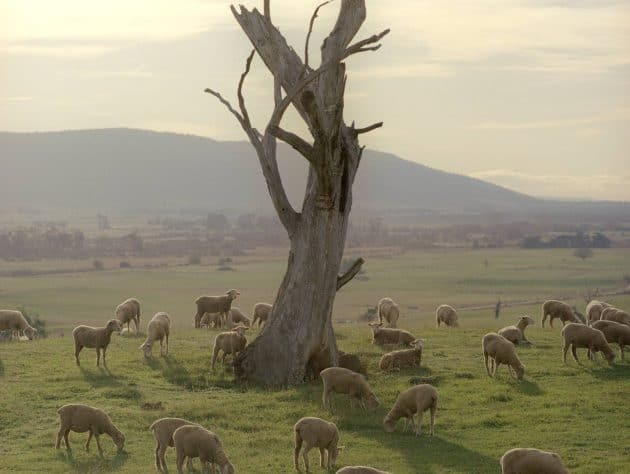
Kin Coedel
Originally from Hong Kong and raised in Canada, Kin Chan Coedel’s work is all about co-creating images that reflect authentic stories and prioritizing genuine exchanges with local communities. As the winner of the 2023 competition, Coedel was commissioned to visit a fourth-generation merino wool farm in Tasmania, Australia. The photographs, captured during the shearing season, offer a glimpse into the life of farmer Julian von Bibra, whose family has cared for the land for generations. Through his lens, Coedel explores a rising movement among wool growers committed to preserving what is left of the local area’s natural heritage — from safeguarding native grasslands to monitoring endangered species — as they work towards a resilient collective future.
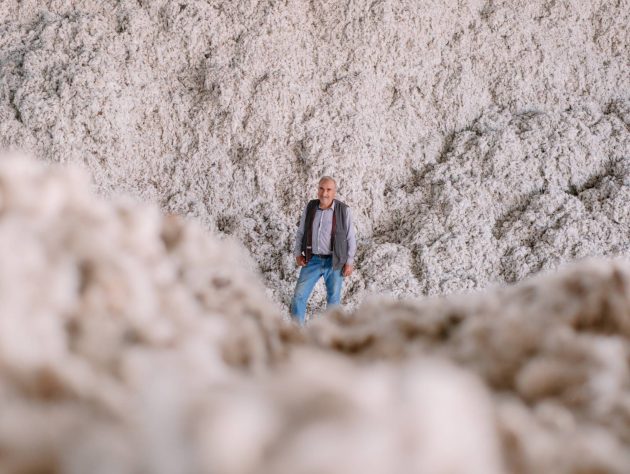
Growing Cotton in Harmony with Nature in Türkiye by Anass Ouaziz
Anass Ouaziz was born in Marrakech and raised in Beni Mellal. He has long found the sublime in the mundane even before he became a photographer back in 2015. Ouaziz considers photography to be an exercise in observation, and that stories emerge by simply paying attention. For him what comes out from these seemingly insignificant moments is a celebration of the beauty of the everyday. The extraordinary in the ordinary.
As our 2022 winner, Ouaziz joined Textile Exchange to visit the Büyük Menderes River Basin in Türkiye. He documented how cotton farming is impacting the area’s rich biodiversity and how regenerative practices can integrate local farmers into an agricultural system that gives back to nature instead.
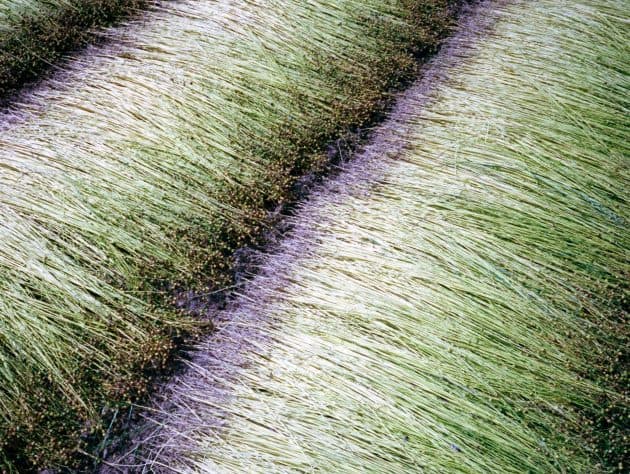
The Lineage of Linen on France’s Fields by Cecilie Nicoline Rasmussen
Cecilie Nicoline Rasmussen is currently living and working in Copenhagen. Danish by nationality, she grew up in Oman, where she relied on observing body language and tiny details of her surroundings to interact in a different cultural discourse. Through this and looking at family albums of people back home, is how she became fascinated with the possibilities of what photography as a medium has to offer.
As our 2022 runner-up, Rasmussen travelled to northern france to document the flax pulling process at Terre de Lin, a cooperative specialized in the culture and the conversion of textile flax from seed to fiber.
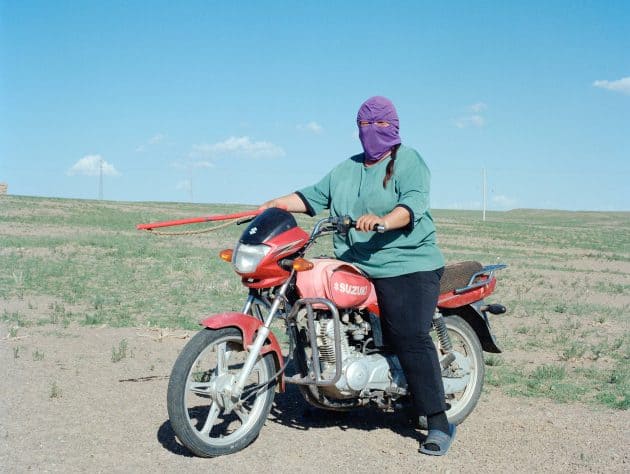
Exploring the Ecosystem behind Nomadic Wool Production in Inner Mongolia by Yichen Zhou
Yichen Zhou is an artist working with photography, video, performance, and installations. Her performance-based work explores her identity as part of a new generation of Chinese artists and points to the challenges of living in a world where she finds multiple cultures and values in conflict.
As our 2022 runner-up, Zhou visited three Mongolian sheepherder families in Mandula Town, Inner Mongolia to explore the ecosystem behind nomadic wool production, documenting how these traditions are changing over time.
CONTACT
Get in touch
If you have any questions about the competition, please contact us at communications@textileexchange.org.